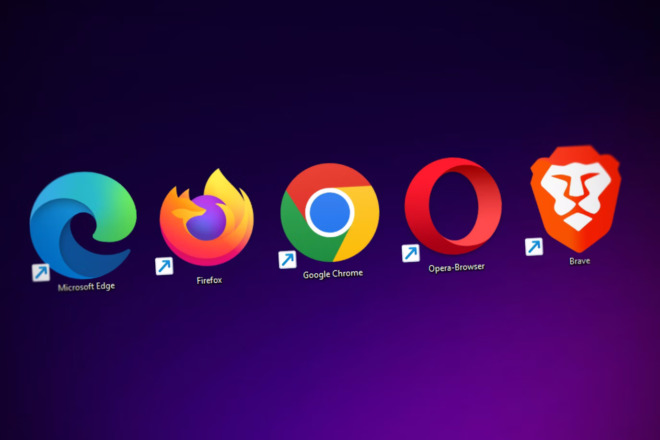For software companies, a website is the first impression potential customers get of their business. It is also the primary entry point for leads to drip through your sales funnel. However, a creating a great website design for a software company requires more than a homepage and a simple CTA (call-to-action).
Good website design incorporates careful consideration and decision-making. For one, it must keep your product or services in mind. At the same time, you must think about your audience, their behaviors and how to make your website the most user-friendly. With that in mind, it’s important to learn all the essential tips when designing a website for your software company.
1. Embrace Simplicity
Keeping your software company’s website design simple is crucial because it ensures users can get to where they want. In turn, an easily navigable website leads to a better user experience. This makes your platform stand out because it maintains clarity and straightforwardness.
To achieve a simple website design:
- Consider prioritizing content and eliminating unnecessary elements.
- Use a clean layout, a consistent color palette and easily readable fonts.
- Focus on core functionalities and strategically place your CTAs.
Overall, less is more in this context because you’re providing everything your audience needs in a minimalistic way.
Another thing to remember is to avoid overloading users with excessive information. Software companies typically have much information to discuss with their products or services. However, too much of it can overwhelm users and cause decision fatigue. Instead, consider presenting your information concisely. Provide options for deeper dives so you can guide them seamlessly through your website.
2. Highlight Your Value Proposition Above the Fold
In website design, “above the fold” is the portion of the website the site visitor sees before scrolling. This is the part of the website where you get to make a positive impression. Therefore, it’s essential to consider placing your value proposition prominently above the fold. That way, visitors immediately grasp what you have to offer.
Your value proposition is a brief but powerful statement that describes your product or service’s unique benefits and value. When users land on a website, they typically take only a second to decide whether to stay or leave. By showcasing the value proposition above the fold, software companies can instantly communicate:
- What they offer.
- How it benefits the user.
- What sets them apart from competitors.
To ensure this part of your website design is effective, use concise and compelling language. Then, complement it with relevant visuals or graphics. Ensure the design highlights the proposition and draws the user’s attention immediately. While strategic placement is crucial for user engagement, it also helps increase the chances of conversion.
3. Engage Visitors With Video and Images
Visual aids are beneficial in communicating your products faster and more effectively than copy alone. For software companies, visuals are crucial in demonstrating a product or service, especially if their offer is complex. That’s why videos and images are helpful — they showcase the features of a software solution effortlessly. In fact, a Wyzowl survey found that 96% of video marketers have seen an increase in user understanding of a product or service.
For instance, videos can give potential customers a quick walkthrough to show off their product. They provide immersive experiences, allowing users to visualize how the software would work for them. Additionally, videos can tell a story and convey the mission behind a product or service, enticing the viewer to try it.
While visual elements are a great way to enhance user engagement, they also establish trust. By providing a clear demonstration, visitors can see the product or service in action. This drives overall interest and, eventually, conversions.
4. Balance Your White Space
White space is also known as negative space — it’s the unmarked areas in a design. In other words, it’s a space devoid of content or visual elements. In web design for software companies, effective use of white space is crucial for creating a user-friendly experience.
Although maintaining a balance of white space is essential for looks, it’s also important for enhancing readability and prioritizing content. When you give your website just enough breathing room around text and images, you prevent visual clutter. In turn, visitors have an easier time focusing on key information. It does so by guiding the user’s eyes, drawing attention to crucial elements like CTAs, headlines and key selling points.
To ensure your website strikes the right balance, consider content hierarchy. This is the structuring of information in order of importance. When balanced with white space, users can quickly identify key messages and use the website more easily.
Consistent margins and padding are also important. Margins and padding ensure you have an organized layout. Constant use of these spaces creates a rhythm in the design, making the content more digestible.
5. Provide Value Through a Blog or Resource Center
Software purchasers are among the savviest consumers globally. They’re great at looking into new tech products and services, often diving deep into white papers and product comparisons. After all, they want to be sure they’re making the right investment decision.
With this in mind, why not provide a central place for users to find more information about your offering easily? Software companies can implement this by incorporating a blog or resource center in their website design. By keeping all your resources in one place, you streamline the research process for these users and cater to their user experience needs.
Some of the content ideas you could include in your resource center may have the following:
- White papers: These are comprehensive reports detailing specific aspects of your software. It offers readers a scholarly perspective through research and data points.
- Case studies: Real-world examples of how clients have benefitted from your software. This provides evidence of your product’s effectiveness and can be persuasive to potential buyers.
- How-to guides: Step-by-step instructions or videos showcase how to use various features of your software. While these are great for current users, they also give customers a glimpse into your offer.
Strategic Website Design for Software Companies
Website design for software companies is more than looks — it’s also about displaying your value and building trust with consumers. Keep these design principles in mind to help your software company stand out among the rest. Do so by remembering that your website is the face of your brand, so every decision counts.
About The Author
Eleanor Hecks is the Editor-in-Chief of Designerly Magazine, an online publication dedicated to providing in-depth content from the design and marketing industries. When she's not designing or writing code, you can find her exploring the outdoors with her husband and dog in their RV, burning calories at a local Zumba class, or curled up with a good book with her cats Gem and Cali.
You can find more of Eleanor's work at www.eleanorhecks.com.


